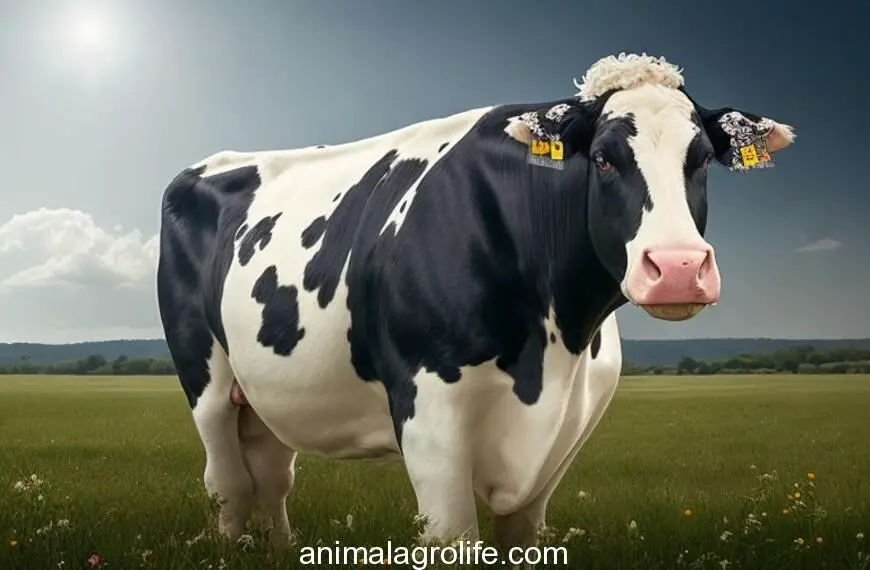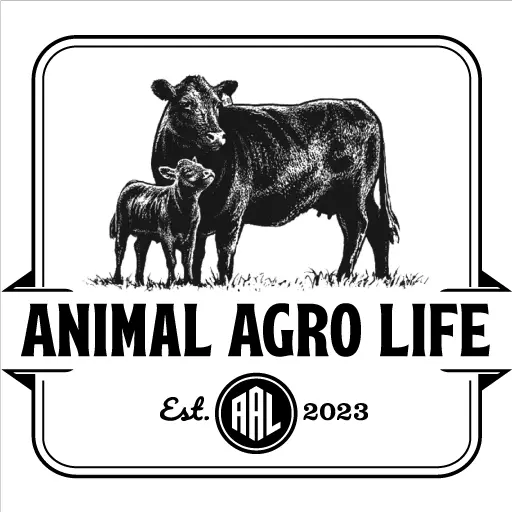Have you ever considered where your milk comes from and what kind of cow it comes from? Just like dogs or horses, there are many different breeds of cows, each with its unique personality. A breed refers to a group of animals that share similar traits in terms of appearance and behavior. Our region has six breeds of dairy cows, with the Holstein and Jersey cows being the most recognized and well-known.
Dairy cows are specifically bred for their ability to produce milk, which is used to make dairy foods. In the U.S., there are seven different dairy cow breeds, although hundreds of cattle breeds are recognized worldwide. Each breed has its distinctive traits and attributes. For example, dairy cattle are selected for their milk production traits, while beef cattle are selected for beef production traits. Some breeds fall in the middle and are known as dual-purpose breeds.
Different regions of the world have their preferred breeds of cattle. The seven main dairy cattle breeds in the United States make up most of the country’s nearly 9.4 million-cow national dairy herd. So, the next time you enjoy a glass of milk or a slice of cheese, you can appreciate the unique qualities of the cow that produced it.
Types of Dairy Cows
Holstein – The Iconic Milk Producer

The Holstein, also known as the Holstein-Friesian, is a highly popular dairy breed in the United States, making up around 90% of cows on dairy farms. Their signature black and white markings are unique to each individual, much like a fingerprint. Originating from the Netherlands, Holsteins were first introduced to the US in the 1600s and have since become a staple in the dairy industry. With official herdbooks established in the late 1800s, Holsteins are known for their exceptional milk production, averaging nearly nine gallons daily. These large-framed cows can weigh around 1,500 pounds, making them one of the most giant breeds. When you think of a dairy cow, the iconic image of a black-and-white Holstein often comes to mind. With their adaptability and impressive milk production, it’s no wonder they remain a favorite amongst farmers nationwide.
Jersey – The Cream of the Crop

Jersey cows are an exquisite breed of dairy cattle with soft brown hair and captivating big eyes. Their compact size and friendly personality make them popular among dairy farmers. The Jersey breed hailed initially from the British Isles of Jersey and was introduced to America in the 1860s. They are the smallest primary dairy cattle breed, weighing 800 to 1,200 pounds when fully grown.
These cows are known for their heat tolerance, feed efficiency, and ability to produce rich milk high in butterfat content, perfect for making delicious cheese and ice cream. Jersey cows come in various shades of fawn, with or without white markings, and can produce up to 19 liters of milk per day.
The American Jersey Cattle Association, established in 1868, is the oldest dairy breed association in the United States. The Jersey breed is well-known for its genial disposition, lower body weight, and lower maintenance costs. Their milk is rich and creamy, making it a preferred choice for making cheese and butter. Jersey cows are a valuable and delightful addition to any dairy farm.
Guernsey – The Gentle Giants

The Guernsey breed of cows is exceptional, known as The Royal Breed for their golden milk. This distinct color is due to the high amount of beta-carotene, a source of vitamin A, in their milk. Originally from the Isle of Guernsey in the English Channel, the breed is believed to have originated from two French breeds and later came to America in the early 1900s.
Their rich and creamy milk is often called the “Golden Guernsey,” and it’s easy to see why. The high levels of beta-carotene give the milk its unique color and exceptional flavor. The cows are typically golden fawns with white areas across their body, weighing around 1,200 pounds.
Despite their hardy nature and moderate milk production, Guernseys are also known for their docile disposition, making them popular among farmers and ranchers. They can produce up to 19 liters of milk daily, making them a valuable asset in the dairy industry.
The Guernsey breed of cows is remarkable, with their distinct golden milk, hardiness, docile temperament, and exceptional milk production. They are a testament to the beauty and diversity of the animal kingdom.
Ayrshire – The Efficient Grazers
Ayrshire cattle, formerly Dunlops, are a hardy and long-living breed originating from Ayrshire in southwest Scotland. These rust-red and white cows are renowned for their solid and dominant nature, accurately representing their Scottish heritage. They have been around since the 1820s and can be found worldwide.
Weighing around 1,200 pounds, Ayrshires are considered a mid-sized breed, typically weighing 450-600 kg. Their red and white markings are distinctive and add to their overall charm. Ayrshire cows are known for efficiently converting grass into milk, producing up to 19 liters daily.
Ayrshire cattle are highly adaptable to various climates and environments, making them an excellent choice for grazing. Their red and white coat is attractive and easy to spot—their milk suits cheese and butter production, making them a versatile breed. Additionally, Ayrshires are known for their robust health and longevity, making them a valuable asset to any farm.
Brown Swiss – The Robust Milkers
The Brown Swiss breed of cows is believed to be the oldest of all dairy cattle breeds, originating in the Swiss Alps around 4000 B.C. They are known for their docile and calm temperament, possibly due to their centuries of wisdom. Additionally, they have adorable big furry ears and are typically more significant than the Holstein breed. Brown Swiss cows were introduced to America in the 1860s and are known for their high protein-to-fat ratio in their milk, making it an ideal choice for cheese production. They are the second-most productive dairy cows, capable of producing up to 30 liters of milk per day. Their milk typically contains 4% butterfat and 3.5% protein. Despite being low-maintenance, Brown Swiss cattle are known for their resilience and durability, making them a popular choice for dairy farmers. Their gray-brown coat adds to their charm, and are often praised for their longevity and strong constitution.
Milking Shorthorn – The All-Purpose Cows
Milking Shorthorns are renowned for their efficiency in grazing and ease of management, which could be why they were among the first dairy cows to travel the world, arriving in America, New Zealand, and Australia in the late 1700s. Originally hailing from England, these cows have a rich history and have since become a valuable asset on diversified farms due to their dual-purpose nature.
As a versatile breed, the Milking Shorthorn was initially bred for milk and beef production, making them a valuable asset to farmers. However, through selective breeding, the dairy breed of Milking Shorthorn now focuses primarily on milk production. When fully grown, these cows can weigh up to 1,400 pounds and come in various colors, from red and white to roan.
While the seven major U.S. dairy breeds include the Milking Shorthorn, there are other dairy breeds and crossbreeds available, such as the Dutch Belted, American Lineback, Montebeliarde, Milking Devon, Normande, Norwegian Red, and more.
Originating from Great Britain, the Milking Shorthorn breed has a rich history and is known for producing up to 22 liters of milk daily. Milking Shorthorns are a valuable addition to any diversified farm with their dual-purpose nature and a range of coat colors.
Red and White Holstein – A Colorful Variant
Holstein cows are widely recognized as one of the most popular breeds, typically characterized by their black-and-white coloration. However, it’s important to note that Holsteins can also come in a striking red and white coat, resulting from a recessive gene. The Red and White Holstein breed is a relatively new addition, gaining recognition in the U.S. in 1964. While they share many traits with their black-and-white counterparts, red-and-white Holsteins also boast increased heat tolerance, making them a popular choice among farmers. Their unique appearance sets them apart from other breeds, making them a favorite among some livestock enthusiasts.
Dutch Belted – The Belles of the Pasture
Have you ever heard of the Dutch Belted cattle known as Lakenvelder? These striking cows have a unique appearance, with a white belt encircling their midsection on a black coat. Despite being relatively rare, they are highly valued for their milk quality and adaptability to organic farming practices. One of the most distinguishable features of a Dutch-belted cow is the broad “belt” of white around its middle section. They are considered one of the rarer breeds of dairy cows in the United States, with estimates placing their population at less than 300.
Canadienne – The Heritage Breed
The Canadienne cattle have a remarkable history in North America, especially Canada. These medium-sized cows have a striking dark brown coat and are renowned for their hardiness and ability to thrive in cold climates. Although their milk production is moderate, it is highly valued for its exceptional quality.
U.S. dairy cattle breeds
Certainly! Here’s a table listing some of the significant U.S. dairy cattle breeds, along with brief descriptions of each:
| Breed Name | Description | Milk Production | Butterfat Content | Use |
|---|---|---|---|---|
| Holstein | Smaller in size, light brown with a white face. Known for high butterfat content. | High | Low | Milk Production |
| Jersey | Medium-sized, various colors. Known for versatility, used for milk, meat and as a dual-purpose breed. | Moderate | High | Milk and Cheese Production |
| Guernsey | Medium-sized, reddish-brown with white markings. Known for producing rich and creamy milk. | Moderate | Moderate | Milk and Cheese Production |
| Brown Swiss | Large and solid-colored, usually brown. Known for their gentle disposition and good milk quality. | High | Moderate | Milk Production |
| Ayrshire | Medium-sized, reddish-brown and white. Known for adaptability and efficient foraging. | Moderate | Moderate | Milk Production |
| Milking Shorthorn | Medium-sized, various colors. Known for versatility, used for milk, meat, and as a dual-purpose breed. | Moderate | Moderate | Milk and Meat Production |
| Dutch Belted | Small to medium-sized, white with a black belt around their midsection. | Moderate | Moderate | Milk Production |
Please note that there are other lesser-known dairy cattle breeds, but these are some of the more prominent ones in the United States. The milk production and butterfat content can vary within each breed based on individual cows and their management.
final thoughts
In this comprehensive guide, we’ve explored the top 9 dairy cattle breeds in the United States, providing valuable insights into their characteristics and suitability for various farming needs. Whether you are a seasoned dairy farmer or considering entering the industry, choosing the right breed is a crucial decision that can impact the success of your operation. Each of these breeds brings its unique strengths to the table, ensuring a diverse and robust dairy sector in the U.S.
reference
1.https://www.dairydiscoveryzone.com/blog/name-cow-6-great-dairy-breeds
2.https://www.agdaily.com/livestock/top-us-dairy-cattle-breeds/
3.https://www.influxlipids.com/post/2016/10/31/7-common-dairy-cow-breeds-in-the-us










